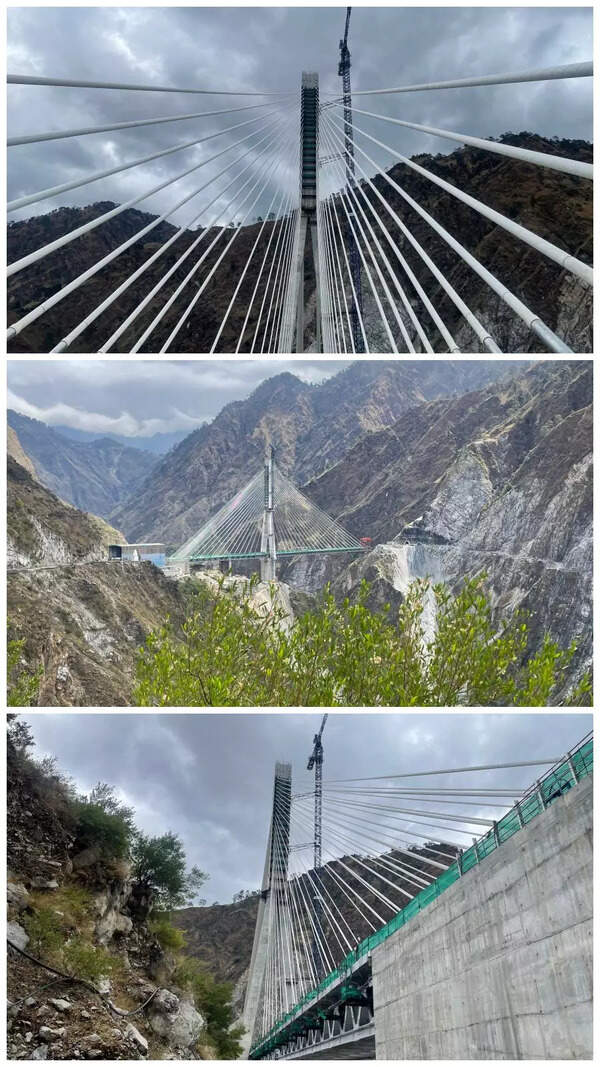- News
- City News
- vadodara News
- ‘Low prey base forces leopards into villages’
Trending Topics
‘Low prey base forces leopards into villages’

Vadodara: Shrinking forest land and loss of wild prey base is forcing leopards to venture out in villages in South Gujarat, a study conducted by the zoology department of M S University has revealed.
The study on prey abundance, land use and movement patterns of leopards in Surat district was initiated jointly by the forest department in association with MSU’s zoology department.
Researchers say Surat district has a high rate of human-leopard conflict in Gujarat where the population of leopards is on the rise. The study said that as numbers of prey base like wild cats, wild boar and deer, are decreasing, leopards are venturing out to hunt livestock in villages.
The outcome was based on detailed examination of leopard scats.
“Collecting scats and examining them is the best way to find out the prey base of the leopards. Our examination of the undigested food revealed presence of dog hairs, poultry feathers among others, establishing that their prey base had changed from wild animals to domestic animals like dogs, goats, poultry birds,” said Dr Geeta Padate, principal investigator of the project titled ‘Ecology of Leopards in Relation to Prey Abundance and Land Use patterns in Surat District’.
The research was conducted in Mandvi, Bardoli, Mahuva, Mangrol and Umarpada taluka which have witnessed large number of leopard conflicts in the last couple of years.
The Gujarat Forestry Research Foundation had sanctioned a grant of Rs 20 lakh for the project. Through this first of its kind study the researchers systematically investigated scats of leopards.
“Talukas like Mandvi, Mahuva and Bardoli have witnessed the highest human-leopard as well as livestock/ poultry conflict in the last five years. Mandvi alone has witnessed 62 cases of leopards attacking livestock or poultry followed by 18 each in Bardoli and Mahuva and eight in Umarpada,” said assistant professor Dr Chandni Valodkar, co-investigator of the project.
“Our study has found that since agriculture space has expanded and sugarcane cultivation too has grown, these fields are acting as a shelter for these leopards which are nocturnal animals,” she said.
“The sugarcane fields which are not harvested for 10-11 months along with abundant ‘gando bawal’ located near the water bodies are acting as a shelter for the leopards who use them for their hiding during day time and venture out in the night in search of food. Livestock like goats, poultry birds that villagers keep are becoming their easy prey,” she said.
At the same time, almost every taluka in Surat district has either a river, a tributary or a waterbody which help leopards in their survival and provide a space for their movement.
The study on prey abundance, land use and movement patterns of leopards in Surat district was initiated jointly by the forest department in association with MSU’s zoology department.
Researchers say Surat district has a high rate of human-leopard conflict in Gujarat where the population of leopards is on the rise. The study said that as numbers of prey base like wild cats, wild boar and deer, are decreasing, leopards are venturing out to hunt livestock in villages.
The outcome was based on detailed examination of leopard scats.
“Collecting scats and examining them is the best way to find out the prey base of the leopards. Our examination of the undigested food revealed presence of dog hairs, poultry feathers among others, establishing that their prey base had changed from wild animals to domestic animals like dogs, goats, poultry birds,” said Dr Geeta Padate, principal investigator of the project titled ‘Ecology of Leopards in Relation to Prey Abundance and Land Use patterns in Surat District’.
The research was conducted in Mandvi, Bardoli, Mahuva, Mangrol and Umarpada taluka which have witnessed large number of leopard conflicts in the last couple of years.
The Gujarat Forestry Research Foundation had sanctioned a grant of Rs 20 lakh for the project. Through this first of its kind study the researchers systematically investigated scats of leopards.
“Talukas like Mandvi, Mahuva and Bardoli have witnessed the highest human-leopard as well as livestock/ poultry conflict in the last five years. Mandvi alone has witnessed 62 cases of leopards attacking livestock or poultry followed by 18 each in Bardoli and Mahuva and eight in Umarpada,” said assistant professor Dr Chandni Valodkar, co-investigator of the project.
“Our study has found that since agriculture space has expanded and sugarcane cultivation too has grown, these fields are acting as a shelter for these leopards which are nocturnal animals,” she said.
“The sugarcane fields which are not harvested for 10-11 months along with abundant ‘gando bawal’ located near the water bodies are acting as a shelter for the leopards who use them for their hiding during day time and venture out in the night in search of food. Livestock like goats, poultry birds that villagers keep are becoming their easy prey,” she said.
At the same time, almost every taluka in Surat district has either a river, a tributary or a waterbody which help leopards in their survival and provide a space for their movement.

About the Author
Prashant RuperaPrashant Rupera is special correspondent at The Times of India, Vadodara and reports on politics, business, heritage, and education. He has been regularly reporting on the dairy sector in Gujarat which pioneered the White Revolution in the country. His interests include reading, watching movies and spending time with family and friends.
Start a Conversation
FOLLOW US ON SOCIAL MEDIA
FacebookTwitterInstagramKOO APPYOUTUBE










